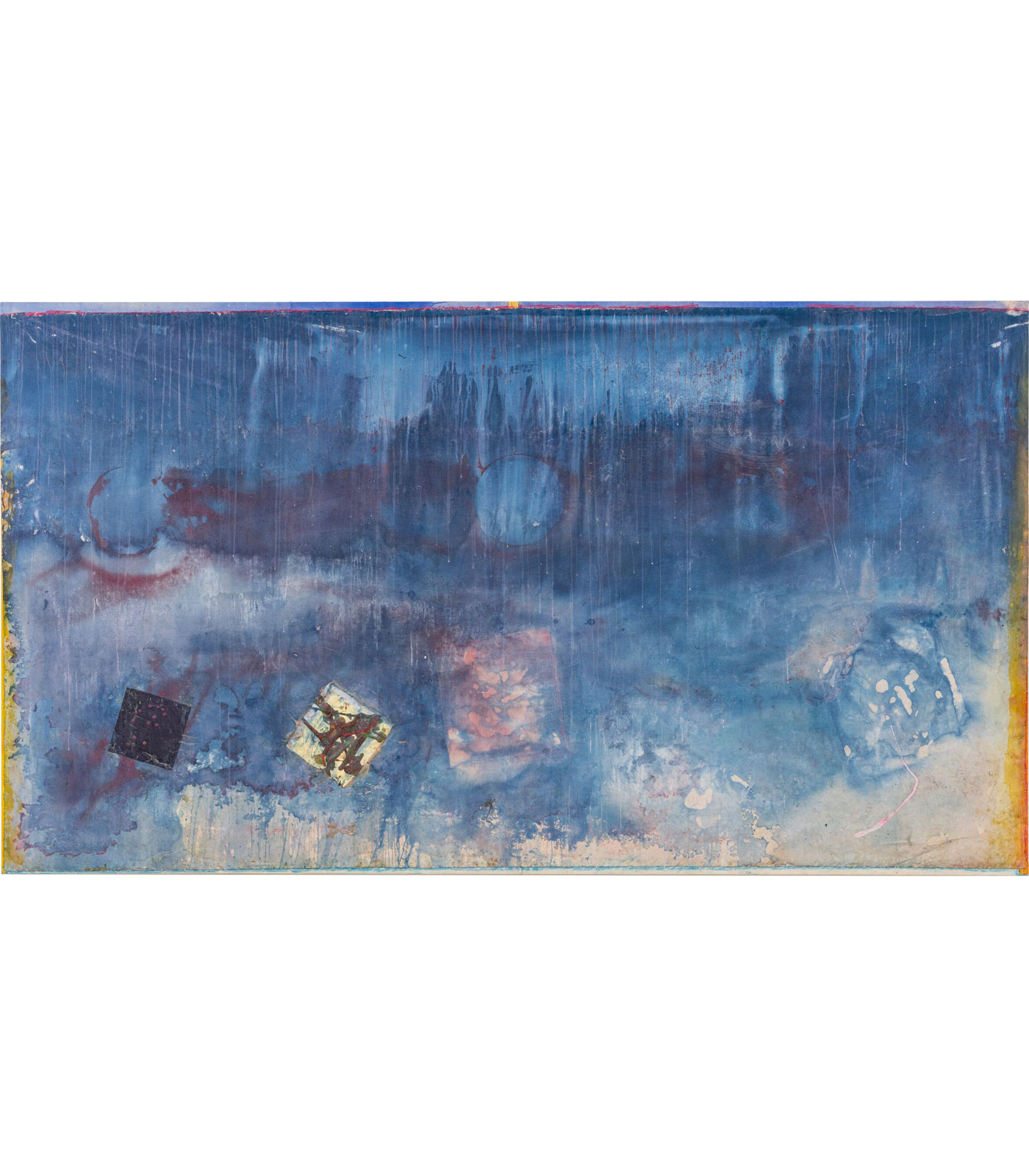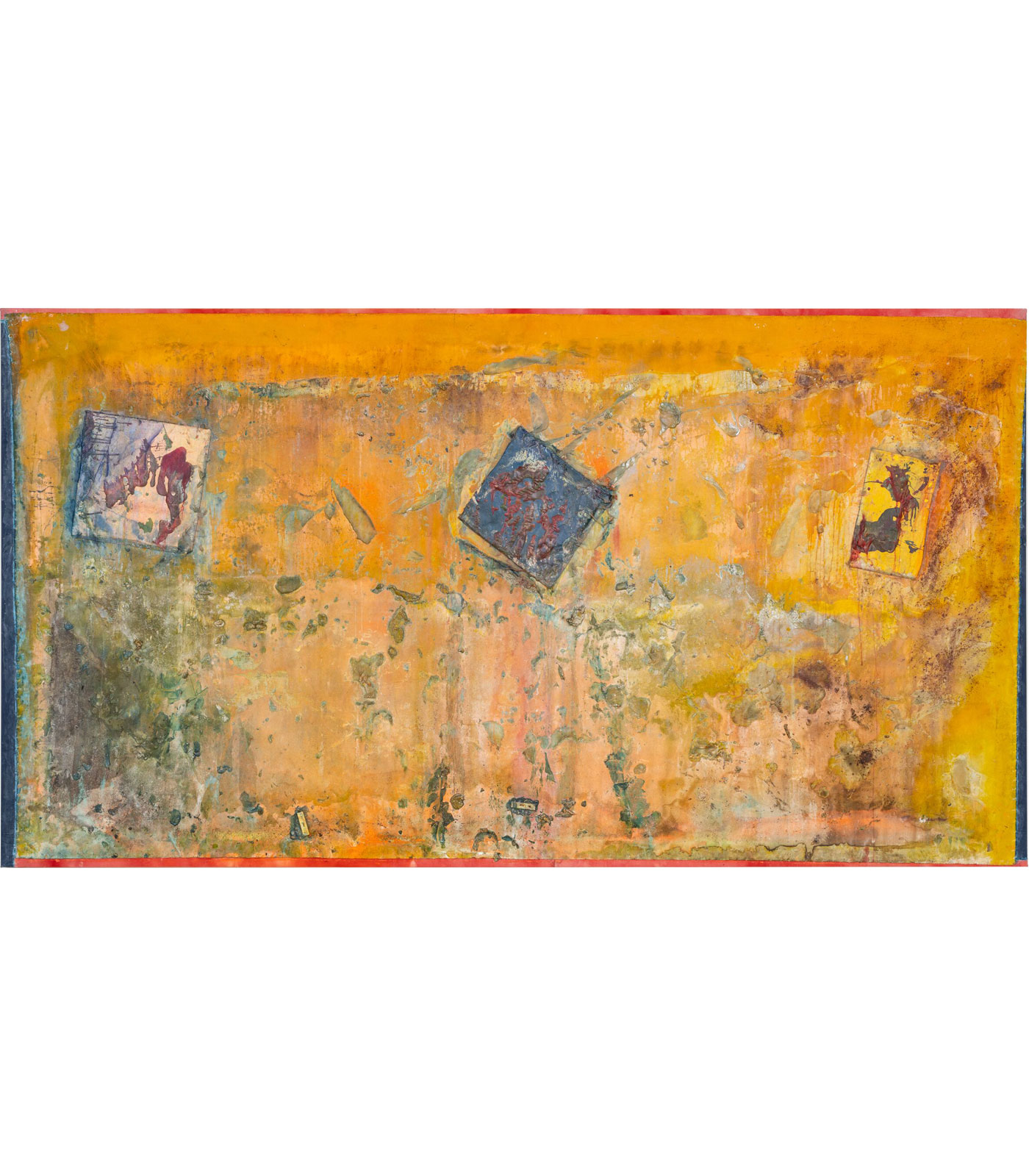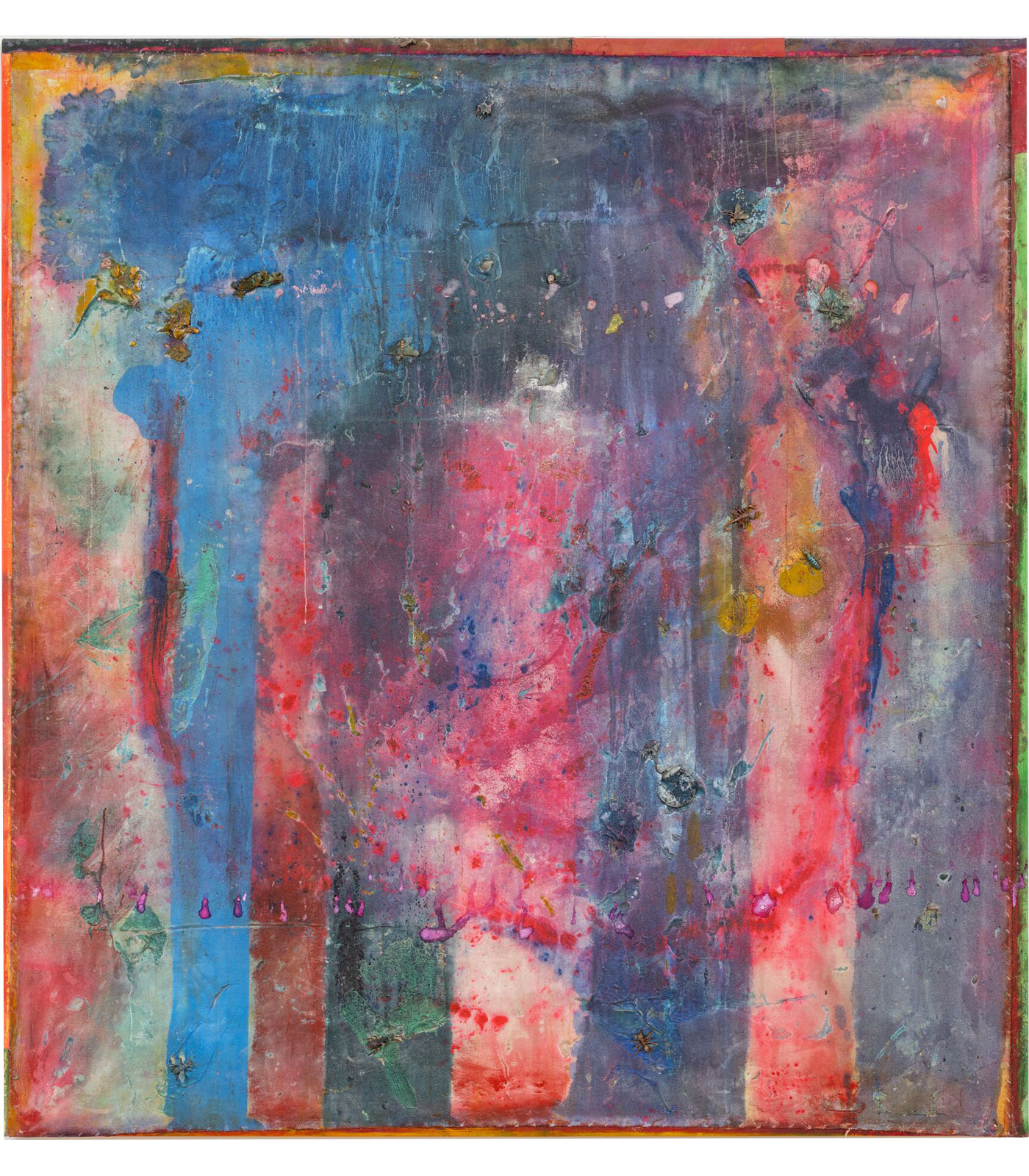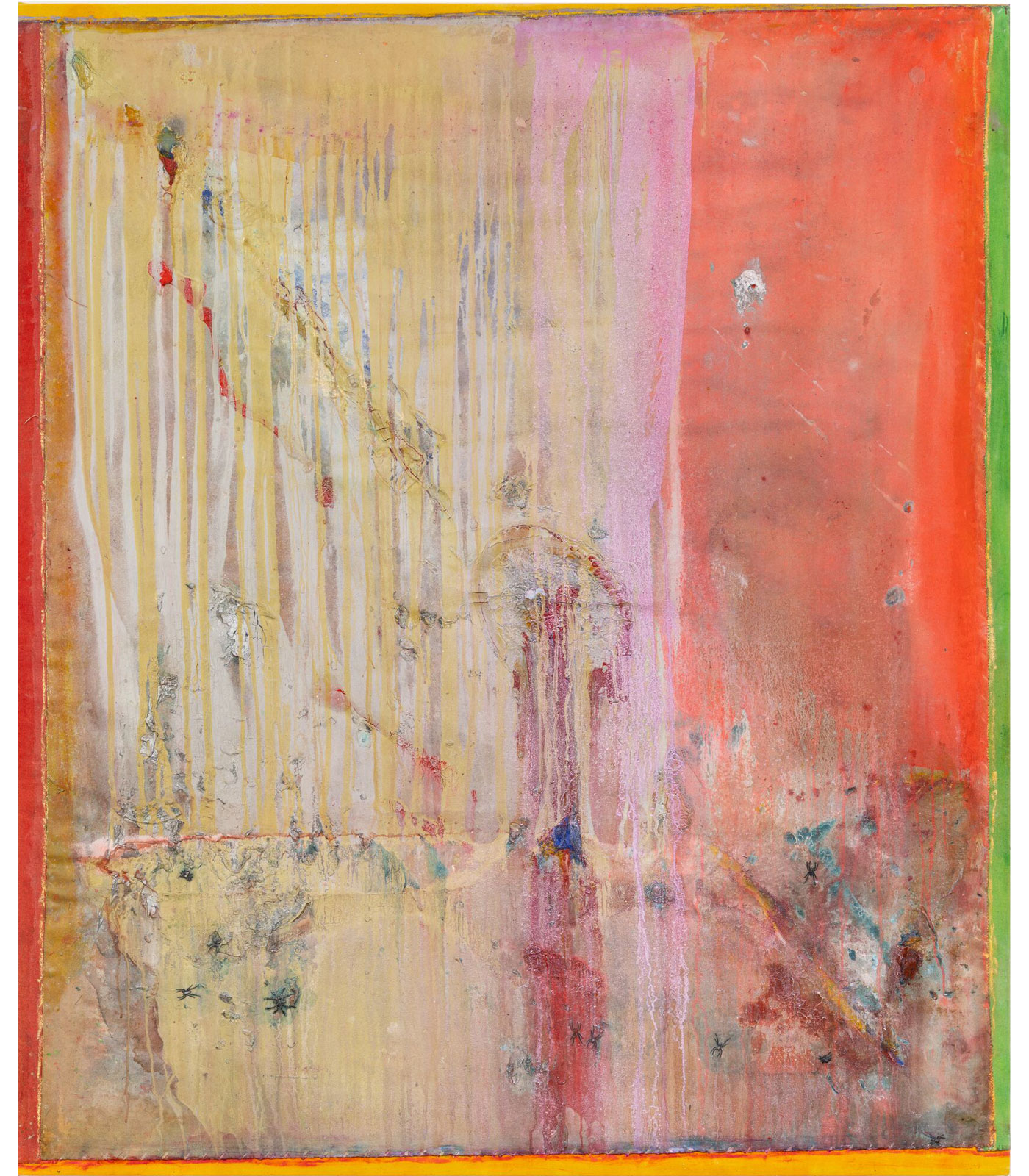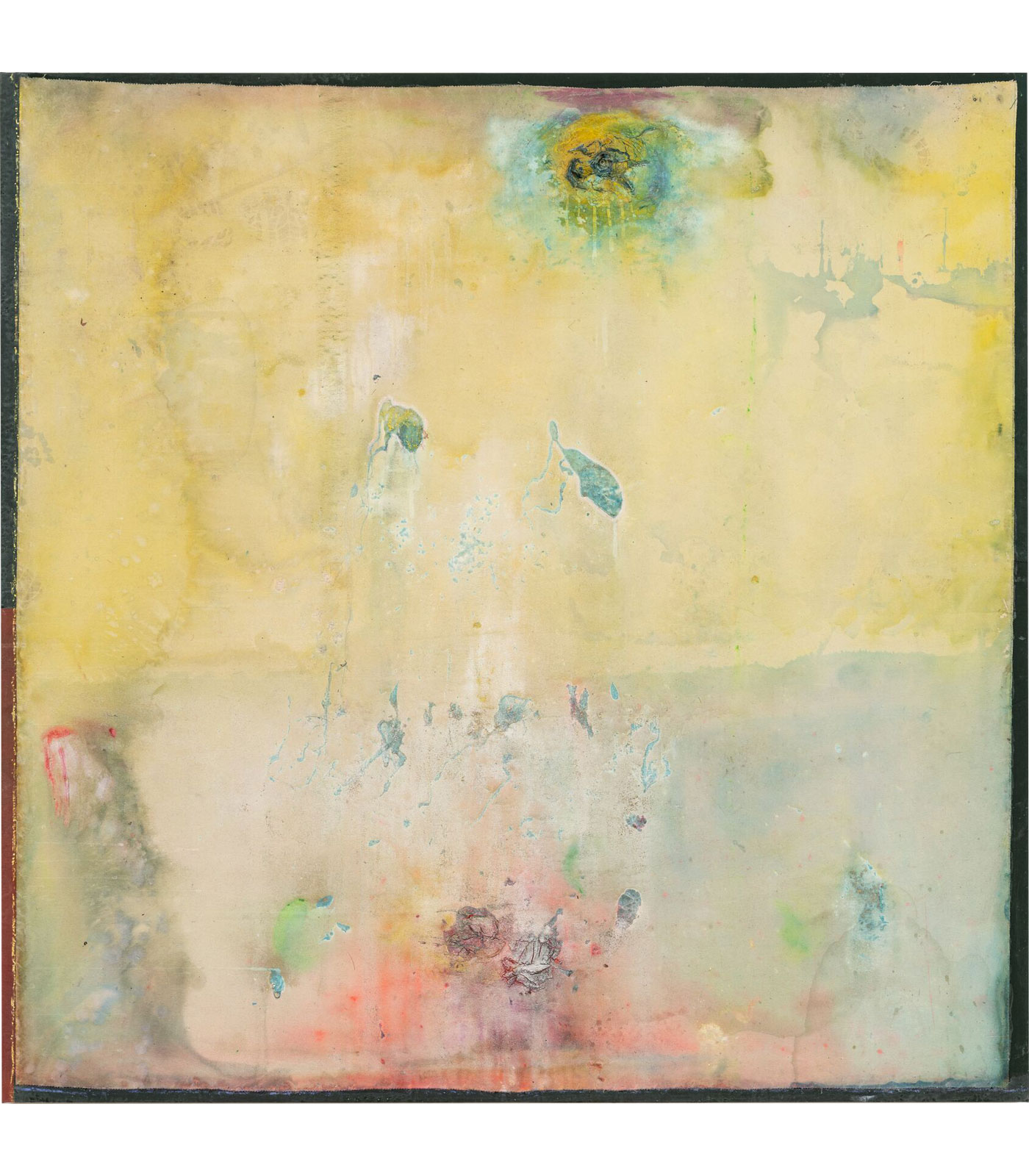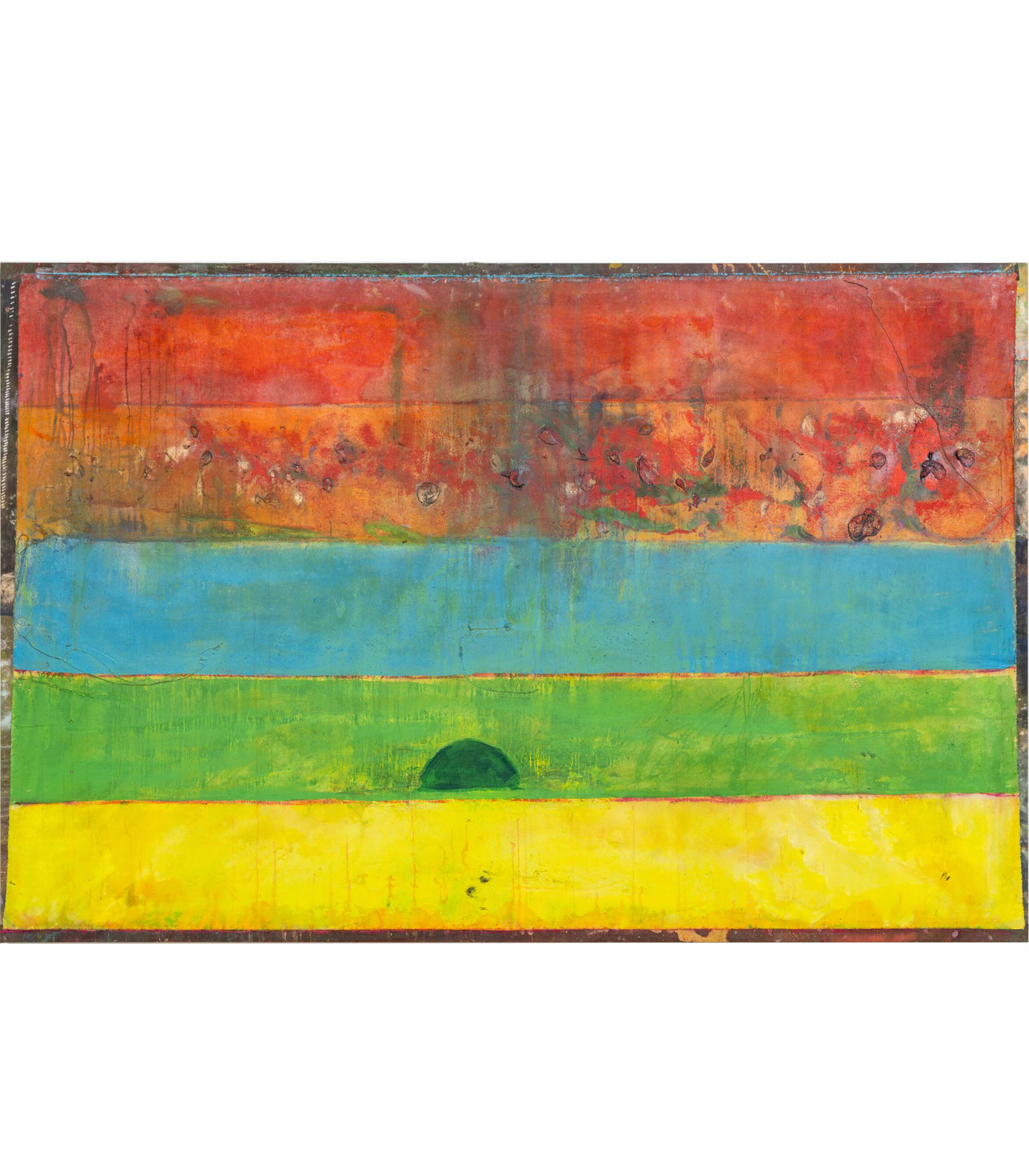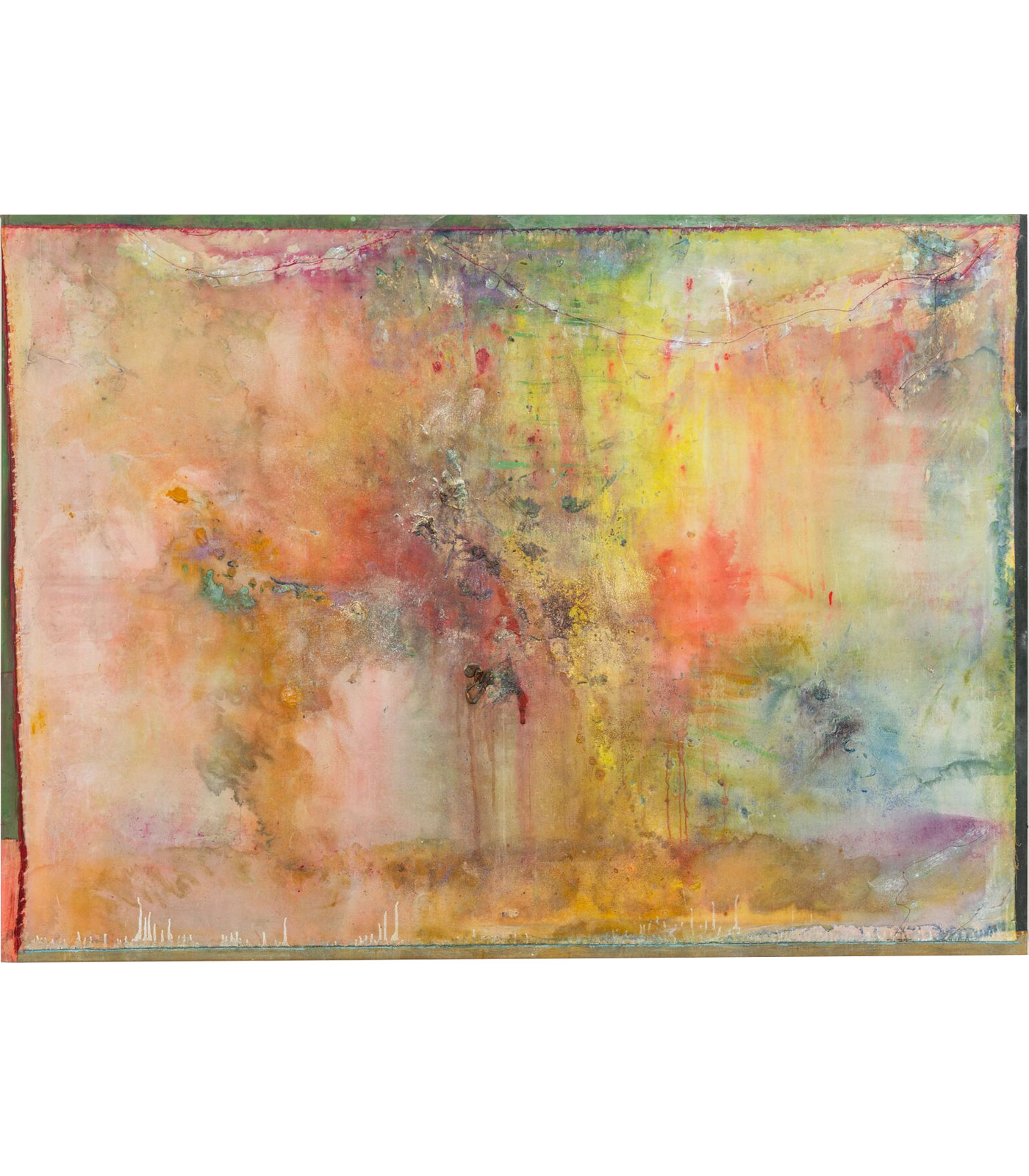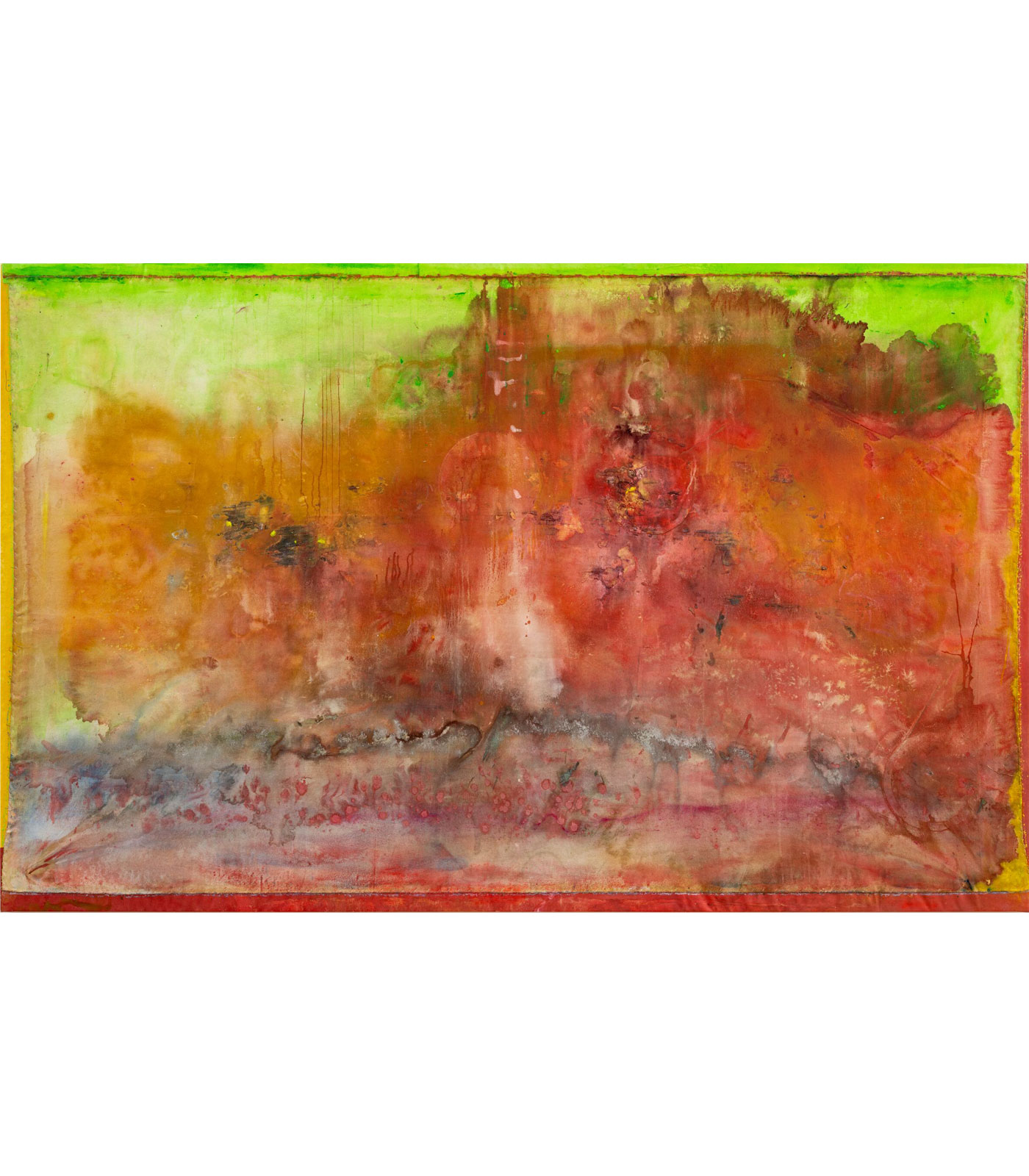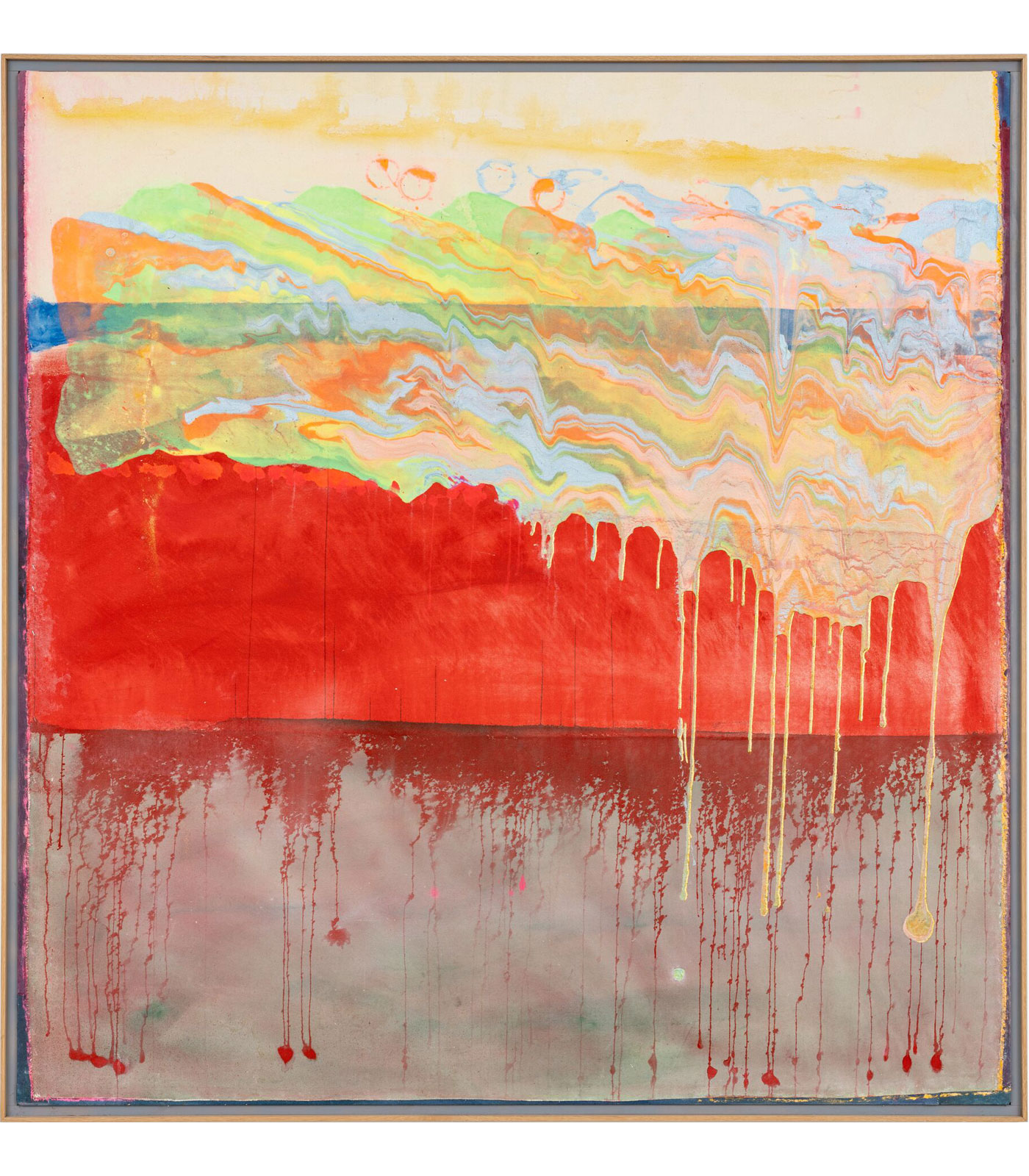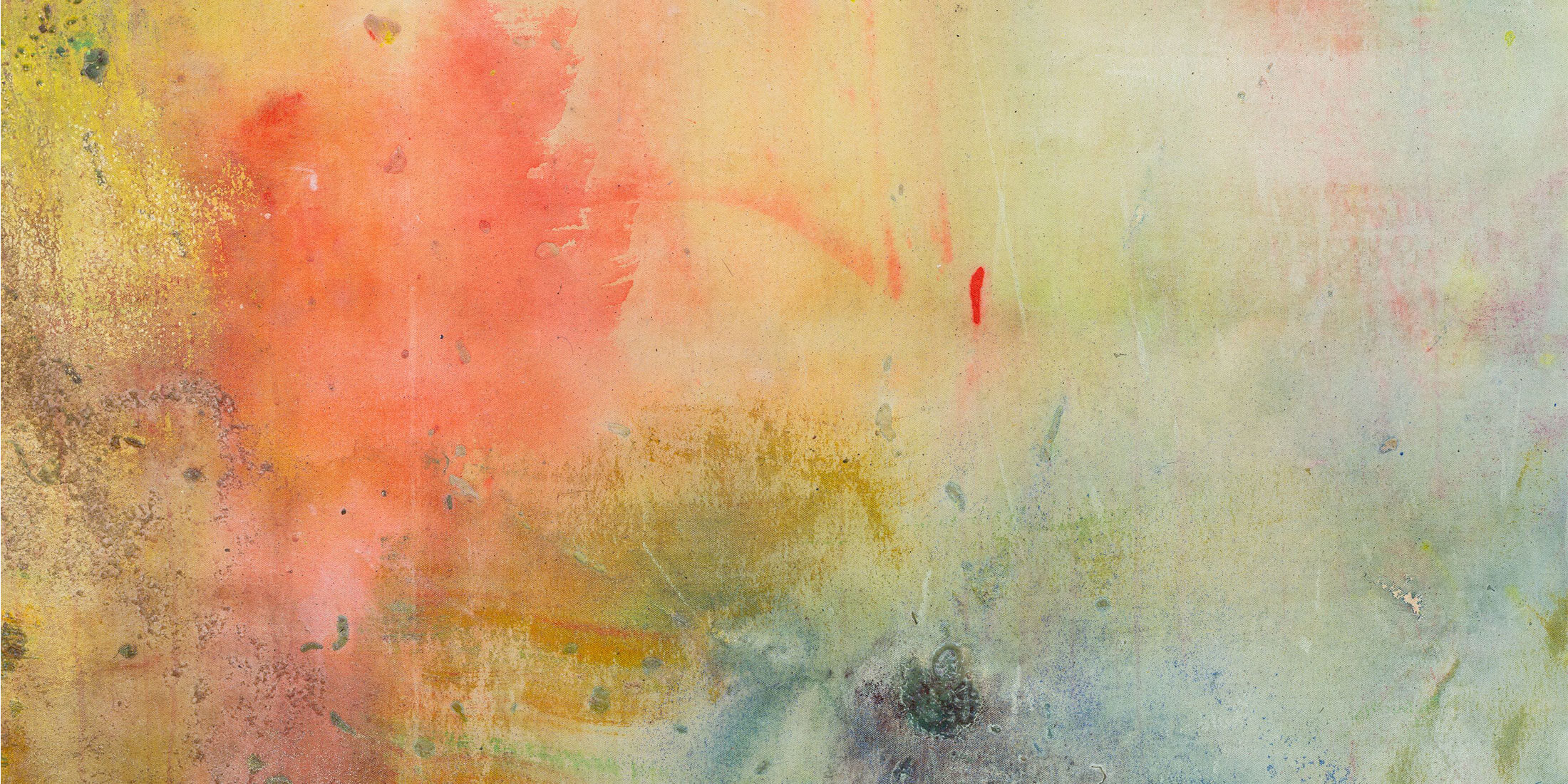
Frank Bowling
Landscape
26 May – 5 August 2023
West Hollywood
One of the foremost British artists of his generation, Sir Frank Bowling has spent more than six decades relentlessly challenging the limits of the medium of painting and expanded its possibilities, attracting acclaim for his contributions to abstraction. ‘Landscape,’ the artist’s first solo exhibition at Hauser & Wirth West Hollywood, presents recent ebullient paintings that engage the rich art historical tradition of landscape painting – and propel it forward into the present moment.
Landscape has figured in Bowling’s work since the artist first began making his celebrated Map paintings – vast color fields depicting stenciled images of landmasses like South America or his native Guyana – while living in New York in the 1960s. Over subsequent years, he gradually moved away from cartographic representation to embrace the freedom of abstraction as a means to convey the emotive qualities and properties of color.
‘I have been fascinated by English landscape painting since my first visit to the National Gallery in London in the 1950s and that tradition is a furrow that I have ploughed for many years. The thing is, I don’t want to make Turners or Constables or Gainsboroughs; I always tried to avoid that. I want to make something completely new, something that no one has seen before.’ —Frank Bowling
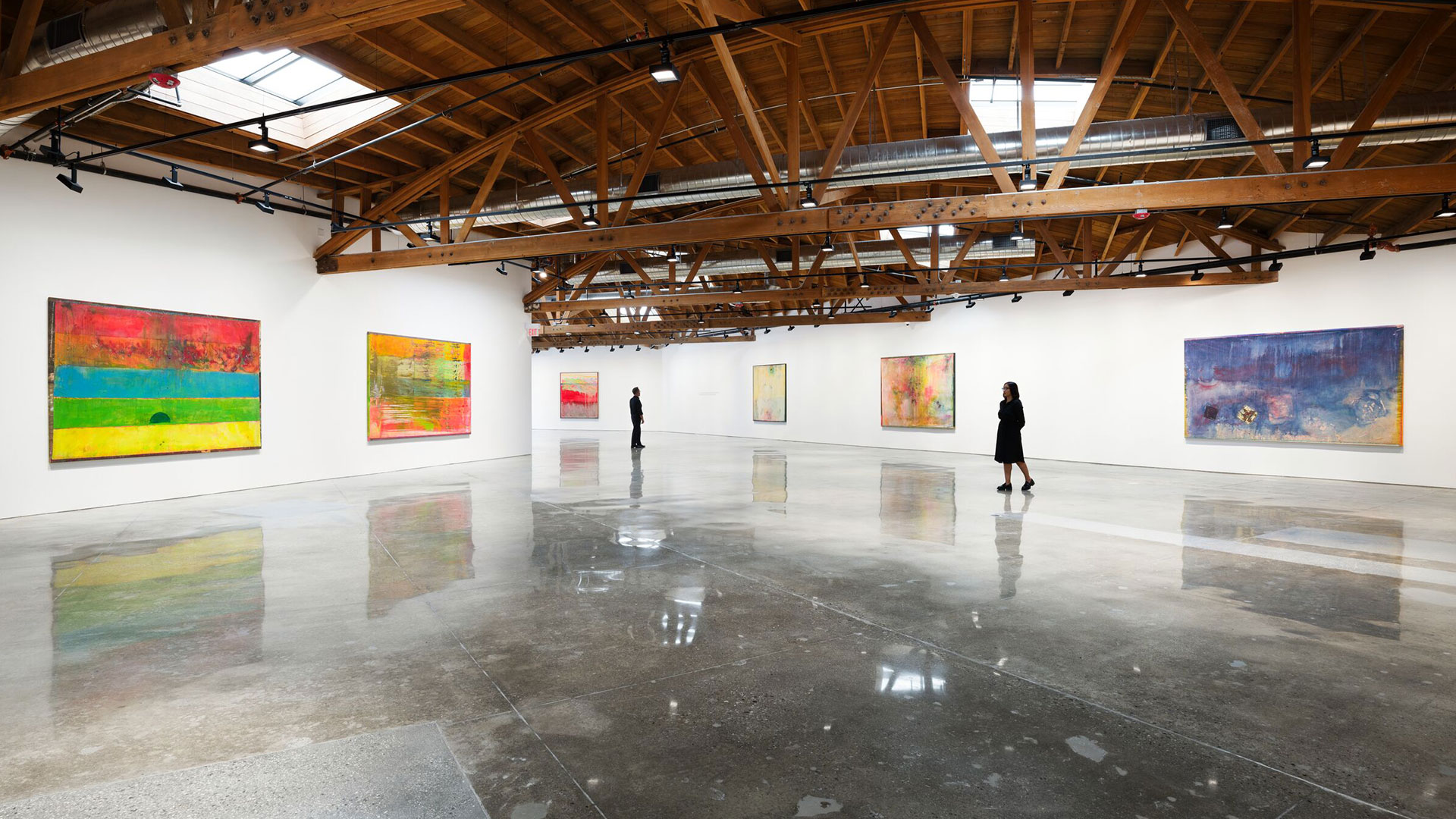
By the early 1980s, having established a studio near the River Thames in the Pimlico neighborhood of London, Bowling had immersed himself in the purely abstract aspects of traditional painting, specifically the rich history of European painterly engagement with land, sea sky, and clouds found in the work of J.M.W. Turner and John Constable. In response to this influence, the artist developed a highly personal abstract language of his own, in which vivid, dynamic flows of paint allude to landscapes – implicit, metaphorical, metaphysical – alive with distant but distinct sense memories of his birthplace.
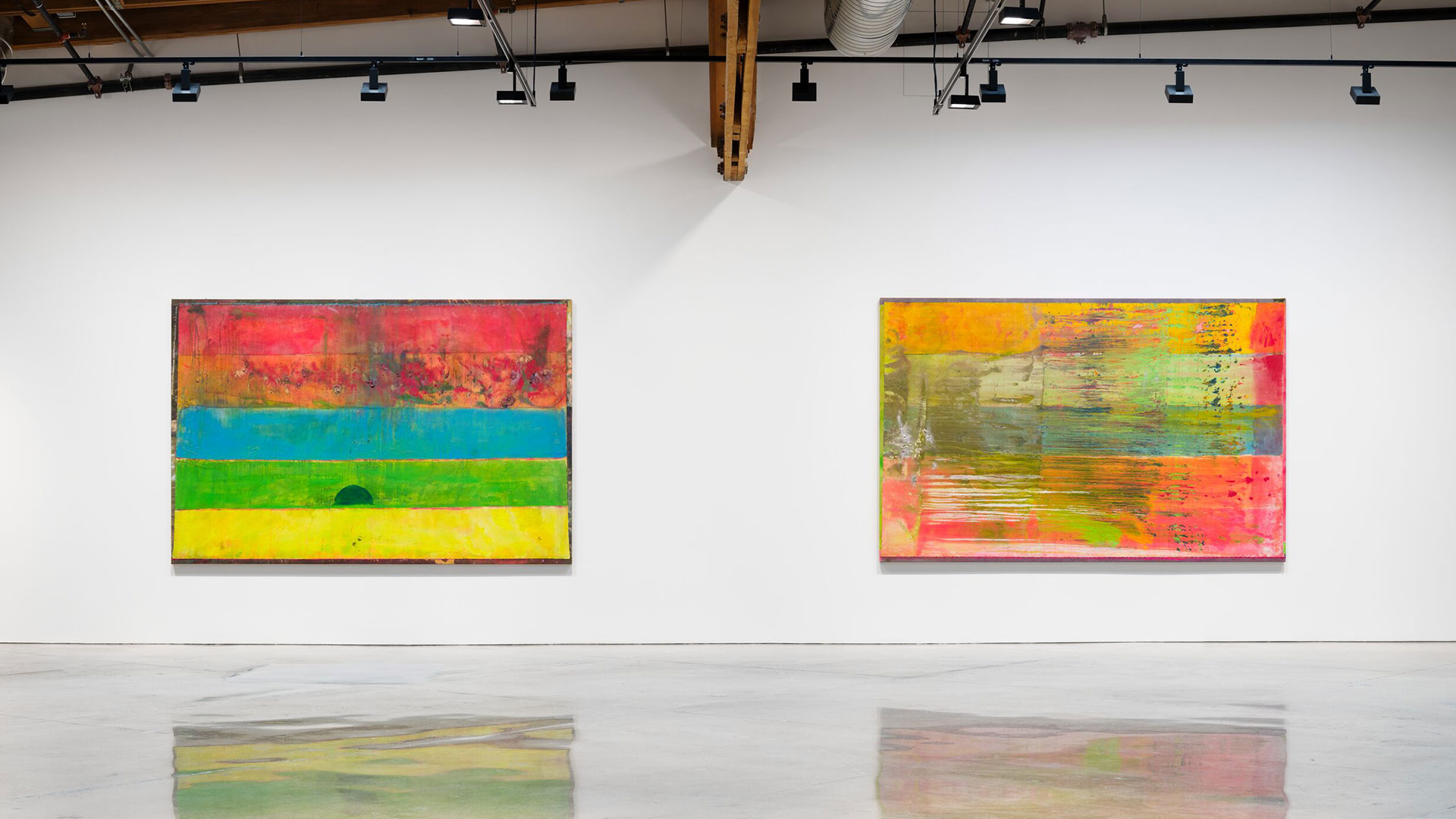
Among the works on view in the exhibition, the monumental canvas ‘#4 to the Lighthouse’ (2021) features broad swathes of paint, some of which have been poured directly onto the canvas and mixed on its plane, rendering an expansive fluorescent field of color imbued with a lambent light. Other works on view, like ‘On The Beach’ (2017) and ‘Skyla’schoice’ (2014), feature found objects embedded in the surfaces of the paintings, offering glimpses of biographical detail that root them in the present moment.
‘I firmly believe that paint carries its own light within it and I want my paintings to catch the light that exists in the natural world. My whole life I have lived near water – the Berbice river, the Thames, the East River. And I am sure that my eye has been influenced by the light over the water and the terrain in those places, whether that is New Amsterdam or London or New York’ —Frank Bowling
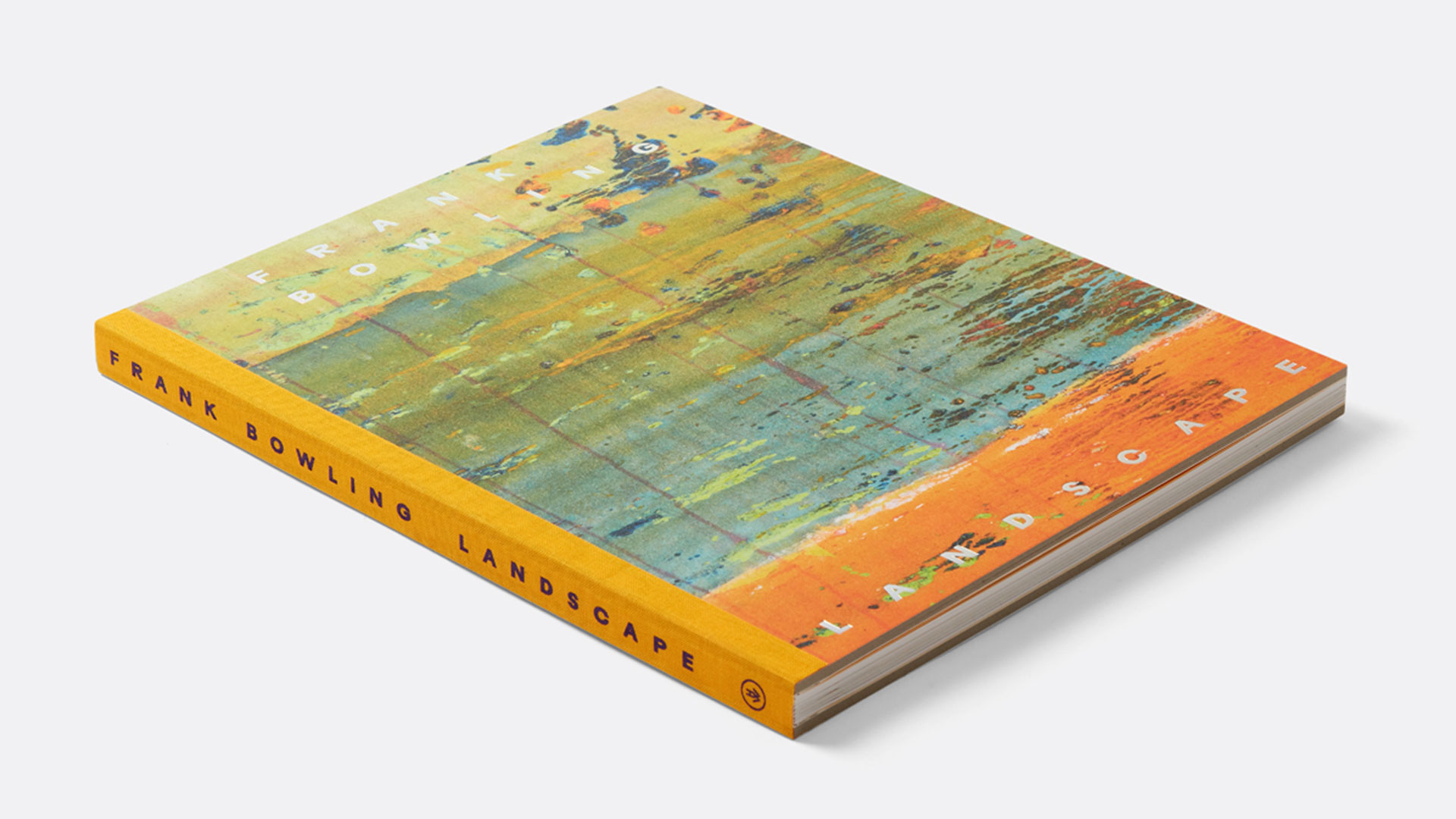
About the Publication
To accompany the exhibition, Hauser & Wirth Publishers will produce an extensively illustrated catalogue featuring an essay by Dorothy Price, Professor of Modern and Contemporary Art and Critical Race Art History at The Courtauld Institute of Art in London.
‘Frank Bowling: The New York Years 1966-1975’ at SFMOMA
‘Landscape’ at Hauser & Wirth West Hollywood coincides with the San Francisco Museum of Modern Art (SFMOMA) exhibition ‘Frank Bowling: The New York Years 1966-1975,’ the first major US survey of the artist’s work in more than four decades. Traveling from the Museum of Fine Arts Boston, the exhibition will be on view 20 May – 10 September 2023, and will feature 11 additional artworks, including an expanded group of paintings made between 2018 and 2022.
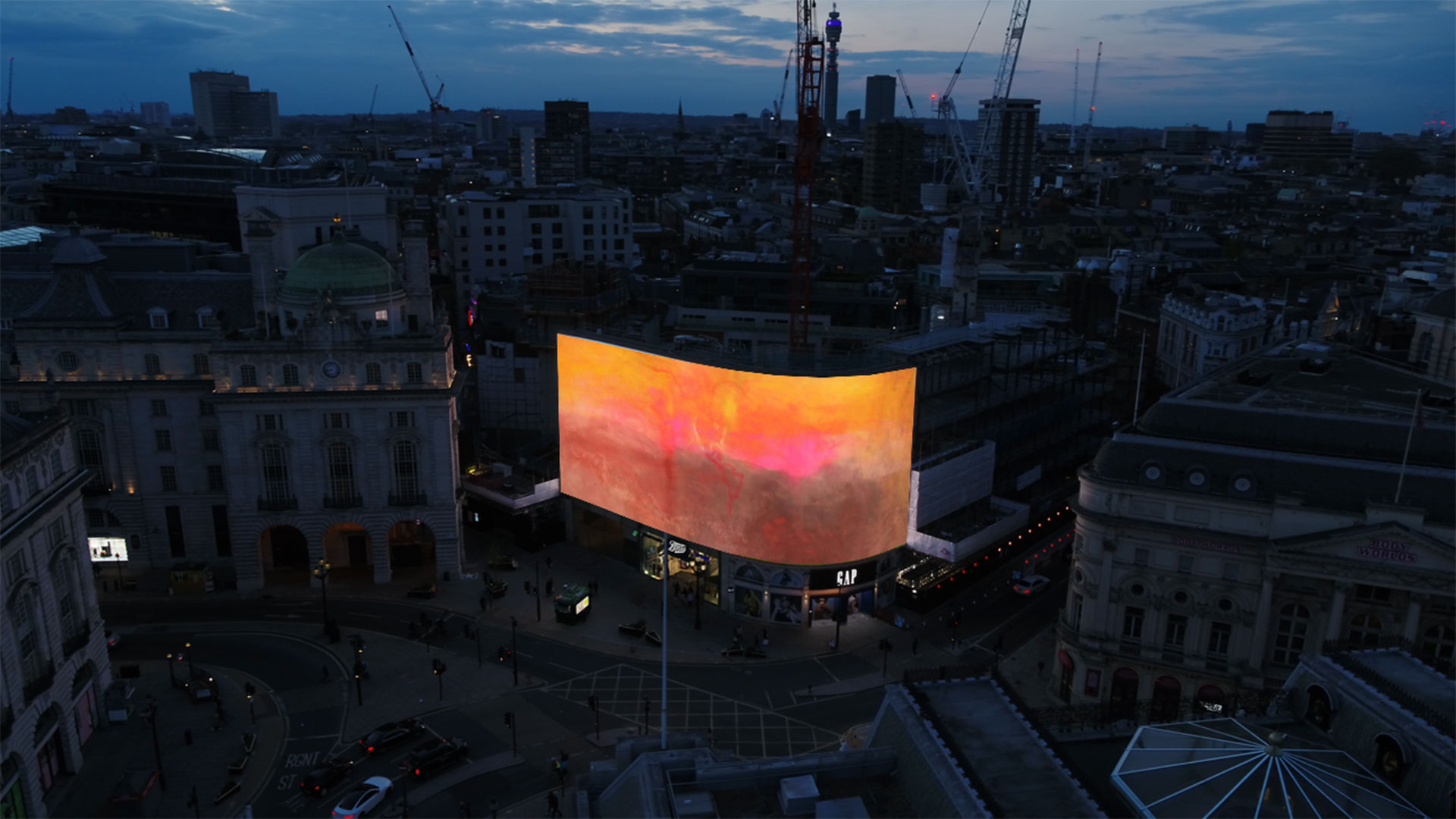
Frank Bowling ‘Arrival’
On view now in Downtown LA and globally: Frank Bowling's first digital artwork ‘Arrival,’ featuring a cascade of color. Celebrating the 70-year anniversary of Bowling’s arrival in London from Guyana in May 1953, The Cultural Institute of Radical Contemporary Arts presents ‘Arrival,’ an exhibition coinciding with The Coronation of His Majesty King Charles III and the 75th anniversary of Windrush.

On view in West Hollywood
‘Frank Bowling. Landscape’ is on view now through 5 August 2023 at Hauser & Wirth West Hollywood. Please visit our location page to plan your visit.
About the Artist

Frank Bowling
For over six decades, Frank Bowling has relentlessly pursued a practice which boldly expands the possibilities and properties of paint. Ambitious in scale and scope, his dynamic engagement with the materiality of his chosen medium, and its evolution in the broad sweep of art history, has resulted in paintings of unparalleled originality and power. Bowling has been hailed as one of the foremost British artists of his generation. Born in British Guiana (now Guyana) in 1934, he arrived in London in 1953, graduating from the Royal College of Art with the silver medal for painting in 1962. By the early 1960s, he was recognized as an assured force in London’s art scene. During this period, his highly individual language of painting, which emerged from expressionistic figuration and pop art, encompassed autobiographical elements and the artist’s socio-political concerns.
Bowling went on to divide his time between the art scenes in London and New York, maintaining studios in both cities. This transatlantic orientation was to see his early engagement with expressive figuration and pop art shift to an immersion in abstraction which continues in his practice today. Visible in his work are the legacies of both the English landscape tradition and American abstraction from which Bowling honed a distinctive vocabulary, combining figurative, abstract and symbolic elements. As Bowling has explained, ‘I was always very conscious of scratching out and of new interpretations replacing the old; updating traditions.’
A major reorientation in Bowling’s practice came in 1966 when he relocated from London to New York, at a time when the artistic scene was divided along lines of formalism and politics. In New York, Bowling pushed his work in new directions. He met Jasper Johns and engaged in a dialogue with his contemporaries, such as Jack Whitten, Mel Edwards, Al Loving, and Daniel Johnson. In 1969, Bowling organized, curated, and wrote the catalogue essay for ‘5+1’, a notable exhibition at the State University of New York, Stony Brook, and Princeton University showcasing the work of five African American abstract artists as well as his own recent paintings. He expressed frustration at the critical invisibility of Black artists and the narrow parameters by which his art and that of his peers was being assessed. Through his writings, as a contributing editor of Arts Magazine (1969-1972), he resisted what he saw as the reductive categorization of ‘Black Art’ as purely political in subject matter, staking a claim for abstraction.
By 1971, Bowling’s visionary approach to painting fused abstraction with personal memories. Concerns of color, surface and process gained in prominence resulting in his iconic series of ‘Map Paintings’, which include the stenciled landmasses of South America, Africa and Australia and were exhibited that same year at the Whitney Museum of American Art in New York. Over the years, the points of reference in his work reflect Bowling’s interest in a wide scope of art history, from Constable and Turner, to Barnett Newman and Mark Rothko. From 1973 to 1978, Bowling experimented with ideas of chance and ‘controlled accidents’, pouring paint from a two-meter height to create his visually arresting ‘Poured Paintings’, an expansion from color field painting.
Bowling returned to London in 1975 but continued to spend significant periods in New York. His sculptural paintings of the 1980s include embedded objects (newsprint, plastic and foam) and thickly textured canvases, and have been described as evoking landscape, riverbeds, and geological strata. In 1986, he exhibited a group of major new paintings at the Serpentine Gallery in London, curated by Ronald Alley, then Keeper of Modern Art at the Tate Gallery. Bowling shares Turner’s and Constable’s preoccupation with light, which is never more evident than in his expansive ‘Great Thames’ series of paintings of the late 1980s.
Today, Bowling’s mastery of the painted medium and explorations of light, color, and geometry incorporate the use of ammonia and multilayered washes. His restless reinvention of the painted plane endures in his current bodies of work which continue to break new ground through his use of thick impasto textures, acrylic gels, collage, stitched canvas, and metallic and pearlescent pigments. Bowling works every day in his South London studio, accompanied by his wife, Rachel, other family members and friends, forever driven by his fascination with exploring the vast and radiant possibilities of paint.
Bowling’s work has been exhibited extensively which has cemented his place in the post-war canon of contemporary and modern art. A turning point in Bowling’s career came in 2003 when his ‘Map Paintings’, which had been in storage and unseen since the early 1970s, were the centerpiece of the exhibition ‘Faultlines: Contemporary African Art and Shifting Landscapes’, at the 50th Venice Biennale. His work drew much attention and paved the way for him becoming a Royal Academician in 2005. Bowling was awarded the OBE for Services to Art in 2008 and a knighthood in the Queen’s birthday honors in 2020. His work is represented in over fifty collections worldwide and has been exhibited in numerous group and solo exhibitions, including the 2017–19 touring exhibition ‘Mappa Mundi’, the hugely successful retrospective at Tate Britain in 2019 and the major exhibition 'Frank Bowling: Americas’ which toured from MFA Boston to SFMOMA in 2022 - 23. Bowling is the subject of a BBC documentary, ‘Frank Bowling’s Abstract World,’ which coincided with the opening of the Tate retrospective. In 2022, he was awarded the Wolfgang Hahn Prize which honors exceptional contemporary artists.
Inquire about other available works by Frank Bowling
On view now through 5 August 2023 at Hauser & Wirth West Hollywood.
Related Content
Current Exhibitions
1 / 11
